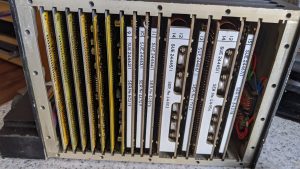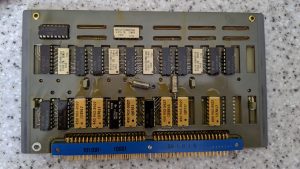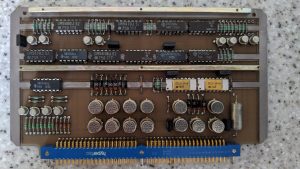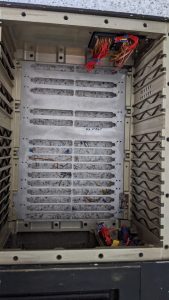Whilst browsing through Ebay for weird and obscure things that people sell I came across several sellers selling surplus military and old aircraft parts. Two particular aircraft seem to be the most popular; the RAF Tornado and the Nimrod with the former retired from service in 2019, the latter much earlier back in the early 2000’s. Rather than the parts coming directly from the aircraft scrapyard I think these have been in storage for a long time and have come from avionics repair centres or spares stores as these parts are no longer required due to aircraft retirement. Some of the parts were ridiculously expensive and some were even brand new especially the LCD screens which were fitted during an avionics upgrade back in 2000-2001 I believe?
Anyway, some parts were very cheap and several LRU’s (the black boxes that sit in the avionics bay) caught my eye. I have often wondered how aircraft electronics works and exactly what is inside those boxes and how they communicate with each other. I took a punt on one of the cheapest LRU’s that was complete as a lot of the ex military stuff has had the electronics stripped out and they are literally empty black boxes. The thing I bought was an “Interface Unit 1” which after some searching on google it appears to sit between the main computer and several other systems within the aircraft and external sensors. There was also an “interface unit 2” which looked similar amongst other things which had their electronics stripped out. I presume this was done as the circuit boards were classified; they could have contained ROM’s containing code that was confidential for example. It was also probably to stop reverse engineering, not that anyone would probably want to for something so obsolete and ancient.
I couldn’t find anything on this particular unit which had the part number of 220SUE5 amongst other NATO and RAF part numbers however looking inside the thing which dates from 1979 it is mainly 74/54 series TTL logic and analog chips such as opamps and comparators. I read on a forum that the Tornado’s original avionics suite to which this is part of didn’t have a CPU as such on it’s main computer LRU. Rather it consisted of a discrete CPU consisting of several circuit boards populated by TTL logic chips; this thing was designed in the early to mid 70’s where CPU’s were in their infancy. The only Intel CPU’s in existence at that time were the 8080 and 8085 and of course the 8008 and 4004.

As I mentioned above the Tornado aircraft had it’s avionics upgraded circa 2000 and these old boxes became obsolete and surplus to requirements. I did find several parts on Ebay from the new avionics system such as the TARDIS (Tornado Advanced Radar/Map Display Information System) and several MFD (Multi Function Display) units but they were prohibitively expensive. Some were several hundreds of pounds. The TARDIS units were brand new as were some of the tactical mission display screens. This particular box contains very ancient and very well engineered electronics that was interesting to dismantle and see how much engineering went into making this thing and what components were used. There was also what looked like a bullet hole in the side but upon further inspection it was just something heavy and sharp such as another LRU box corner that was probably dropped onto it. One PCB was damaged and it had broken the backplane connector at the bottom.

So what on earth am I going to do with it you may ask. Well the box would make a good quality and unusual project box and it seems just ideal to build a bench power supply into making something unique for my workbench. I’ll strip out all the wiring and circuit boards so just the bare box remains so I can install new components for the bench PSU if it’s possible. Speaking of circuit boards I did notice that they were obviously designed on a CAD system rather than the circuit traces being drawn by hand as they are in consumer electronics of the era. It’s definitely well engineered and ahead of it’s time when it was designed. No expenses spared.
Teardown video
Here’s some photos of the various boards. Date codes on the chips are 1975-1979 except for the first board which has date codes of 1985 so I guess this board is a replacement for a faulty one fitted at a repair sometime in the past. The unit was manufactured by Smith’s Industries (their aerospace division acquired by GE Aviation) / LiteF (now part of Northrop Grumman) in 1979.
LRU box teardown progress in order to re-use the case for a bench power supply. Tornado and aviation enthusiasts may hate me now 🙂















